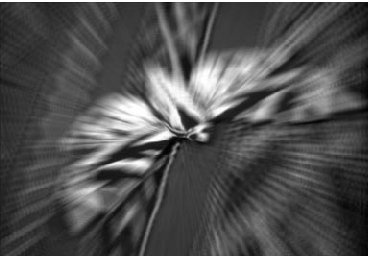

Detecting motion implies examining the spatiotemporal variation of
pixel values in the scene.
spatiotemporal = spatio refers
to the 2D spatial domain of an image in the video sequence. temporal
refers to the 1D time-line of the successive images/video frames in the video.
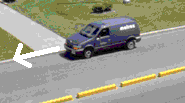
 Frame 0 |
 Frame 1 |
 Frame 2 |
Commercial System
Difficulty: Finding the Correspondence:
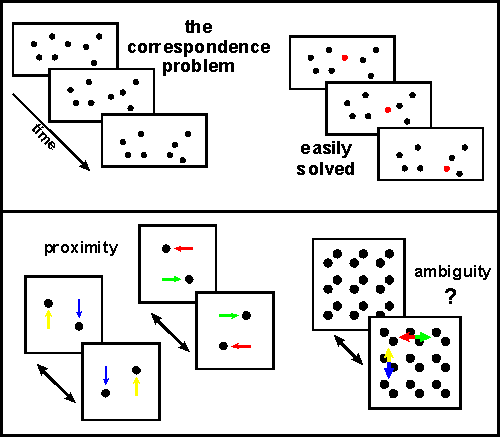
What should correspond: Objects, features or intensities (pixels)?
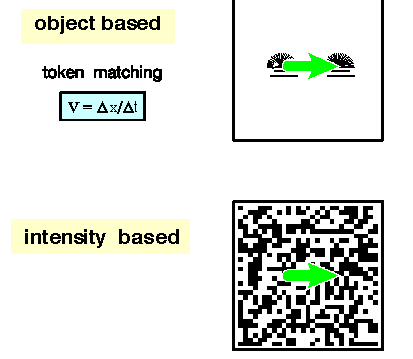
A curiosity: Motion Detection Sensor
A good example of a low-performance application is an infrared motion detector. Nowadays, it is common to offer backyard lighting systems or door opening systems which detect the presence of a moving object with elevated infrared emission. If you wave your hand about, the infrared scene that can be detected features a variation in the infrared signal to some pixel of an imaging system. So what is needed is an array of detector elements and some sort of focused optics. Without the focused optics, moving your hand about does not produce a change in the total illumination- and would not produce a variable signal. Remember that the pyroelectric detectors do not detect heat - only changes in heat.
So, it has become common to package a PVDF detector array in a low-cost optical package which uses a Teflon lens to focus the light. Teflon lens material is also inexpensive, and is transmissive enough in the IR that is does a decent job.
Typical Teflon lenses used in motion detection systems are made with a surface texture that includes several circular bumps. These bumps act as focusing lenses, and will bring light from a particular part of the scene to the detector. As a warm object moves through the scene, radiation is occasionally focused on the detector, causing a transient in signal which is detected.
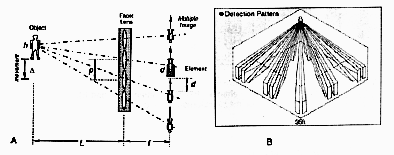
Some Fun Links
One Probaby Brain Circuit for Motion Detection
Motion Detection using Hough Transform
Links on Tracking
Paper on Tracking in Video Surveillance
Paper on Tracking multiple objects (humans)